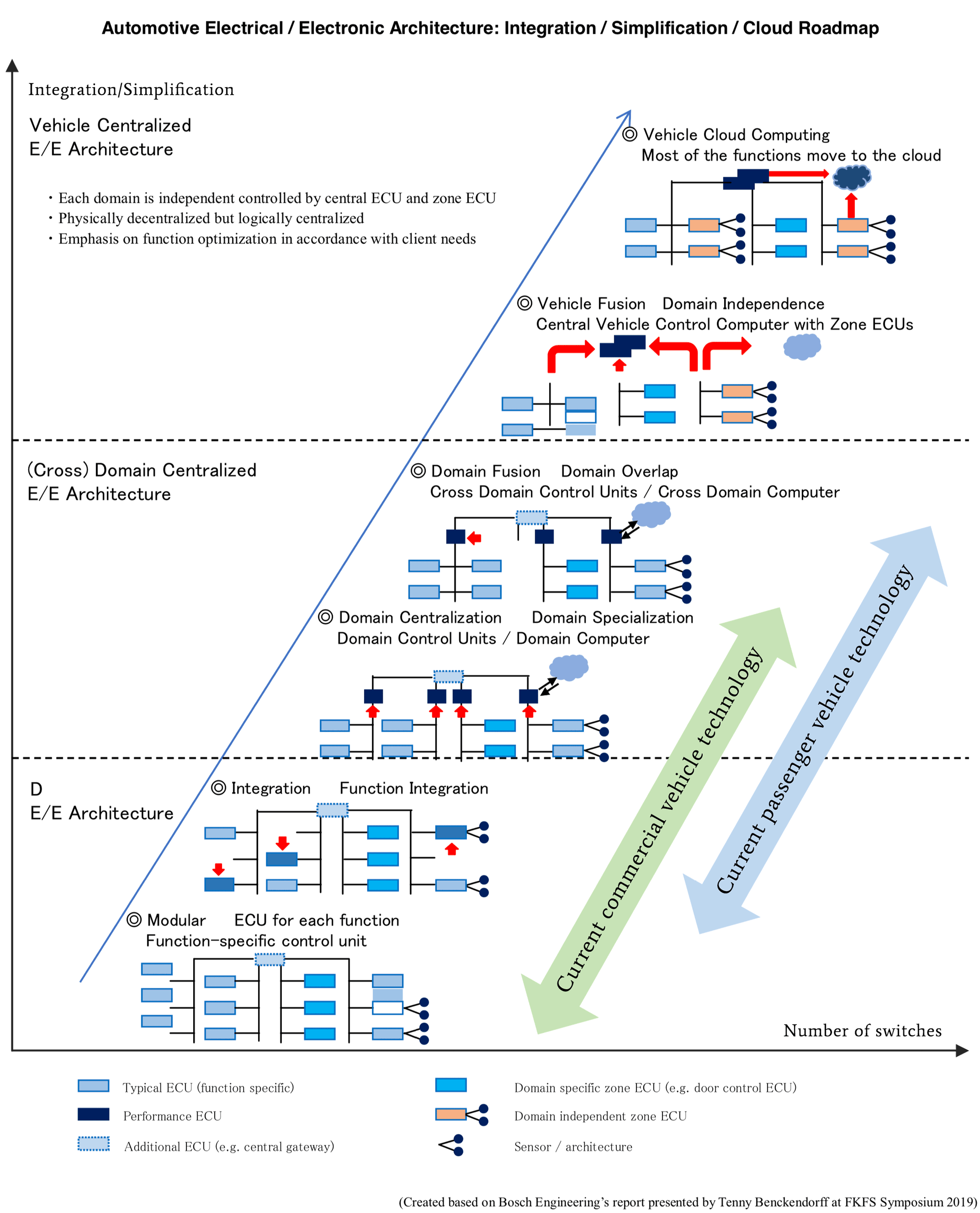AAA weekly
2020-01-27
Copyright FOURIN, Inc. 2025
Next-generation E/E Architecture Aims for Central Vehicle Control ECU
In-vehicle systems are becoming more complex and multifunctional in order to meet consumer safety and comfort requirements as well as regulations such as fuel efficiency. The expansion of new areas such as Advanced Driver Assistance Systems (ADAS), autonomous driving (AD), and connectivity and the electrification of various components is complicating the electrical / electronic (E/E) architecture of automobiles. Looking at the conventional E/E architecture, there are an electronic control units (ECUs) for each function which are modularized. Some features are integrated to reduce the number of ECUs. Furthermore, domain controllers that integrate and manage common related fields such as powertrain-related and safety-related have become mainstream. In some vehicle models, the introduction of devices that control different domains collectively with each other has also begun.
Software development companies such as Bosch Engineering and ETAS believe that each domain of next-generation E/E architectures will be physically independent but they will be logically bundled together by the vehicle central control ECU. In addition, these software companies are considering a moving most of the functions to the cloud and simplifying the configuration of the –n-vehicle system.

There are some issues must be addressed to realize next-generation E/E architecture. One of these issues is security management. Even if the security of the ECU itself is strict as before, if any one ECU in the system is contaminated, it will have a negative effect on the whole system. Therefore, another security layer that comprehensively manages the whole system is indispensable.
Another issue is the energy consumption associated with advanced ECU functions. Research has shown that if the power consumption of the in-vehicle network increases by 1 kW, the CO2 emission will increase by 17g/km, so even if the vehicle is a BEV, it will be a considerable amount. As a result, there is a need to develop a mechanism that turns off specific functions when they are not necessary.
The development of the partially-introduced AUTOSAR Adaptive is progressing. However, the old AUTOSTAR and non-AUTOSAR standards are used as well which means that these systems will co-exist for the time being.

